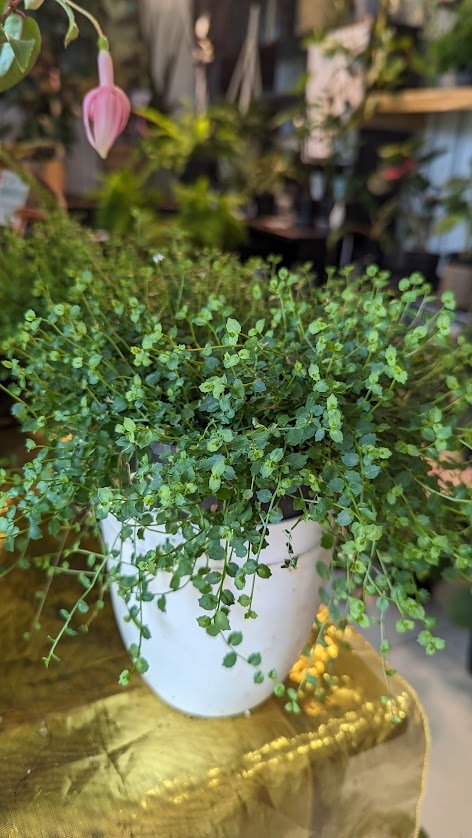 Image 1 of 3
Image 1 of 3

 Image 2 of 3
Image 2 of 3

 Image 3 of 3
Image 3 of 3




Selaginlla Kraussiana...$20
elaginella kraussiana, also known as Krauss' spikemoss or African club moss, is a lush, moss-like groundcover with fine, ferny foliage. It's loved for its soft, dense texture and vibrant green color (sometimes golden or variegated, depending on the cultivar).
In 14 cm Pot…Very well established.
elaginella kraussiana, also known as Krauss' spikemoss or African club moss, is a lush, moss-like groundcover with fine, ferny foliage. It's loved for its soft, dense texture and vibrant green color (sometimes golden or variegated, depending on the cultivar).
In 14 cm Pot…Very well established.
elaginella kraussiana, also known as Krauss' spikemoss or African club moss, is a lush, moss-like groundcover with fine, ferny foliage. It's loved for its soft, dense texture and vibrant green color (sometimes golden or variegated, depending on the cultivar).
In 14 cm Pot…Very well established.
🌿 Selaginella kraussiana Care Guide
Light
Prefers bright, indirect light or dappled shade.
Avoid direct sun—it scorches the delicate foliage.
Tolerates low light, making it great for terrariums or shaded indoor spots.
Water
Keep the soil consistently moist—never allow it to dry out completely.
Water thoroughly when the surface feels just barely dry.
Likes even moisture—wilts quickly if underwatered, but bounces back if caught early.
Humidity
Needs very high humidity (60–90%).
Excellent for terrariums, humid bathrooms, or areas with regular misting.
Dry air causes browning or crispy leaf tips.
Temperature
Likes cool to warm temps, ideally 15–24°C (59–75°F).
Protect from cold drafts and temps below 10°C (50°F).
Soil
Use a peaty, moisture-retentive mix—something that stays damp but drains gently (e.g. peat + perlite or sphagnum + coco coir blend).
Avoid heavy, compacted soils.
Feeding
Feed sparingly—every 6–8 weeks during spring and summer with a very diluted balanced fertilizer (¼ strength).
Too much fertilizer can damage roots and foliage.
Growth Habit
Spreads as a dense mat—can be trimmed to keep neat.
Works well in terrariums, hanging pots, or as a groundcover under taller tropicals.
Toxicity
Non-toxic to pets and humans.
Common Issues
Brown/crispy edges = low humidity or underwatering.
Pale or leggy growth = too little light.
Root rot = overwatering with poor drainage.








